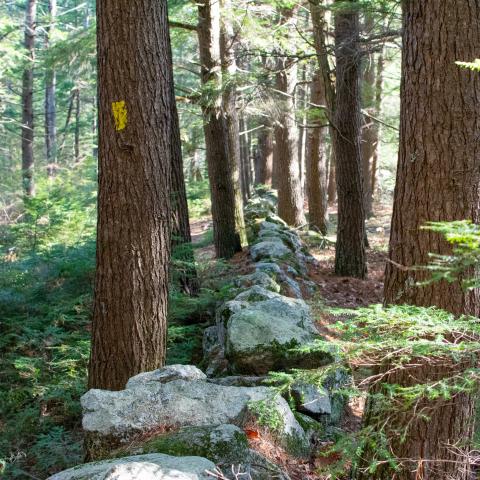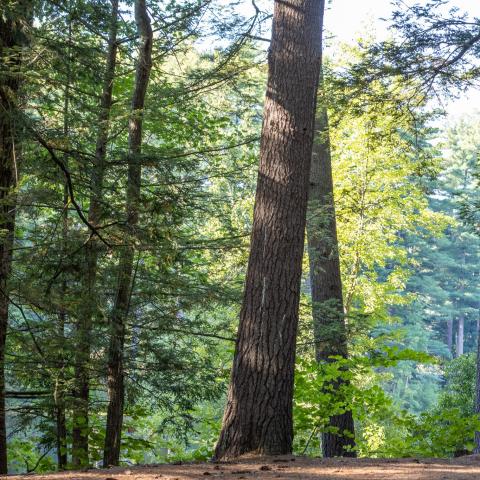
Resources for Smaller Acreage Landowners
Owners of even just a few acres can make a positive difference in their environment through planning and implementing simple stewardship practices, as outlined in The Nature in Your Backyard Series. These resources are specifically curated (though not exclusively) for smaller landowners with properties under 20 acres. Whether you have woods in your backyard or a larger woodlot, your land can support wildlife, protect water quality, produce firewood and other forest products, and offer recreational opportunities. From adding native plants to your yard and enhancing bird habitat, to assessing tree health or cutting trees for firewood, these resources will guide you in becoming a better steward of your property.
You can access recorded presentations and associated resources on a variety of topics by visiting the links below.
Workshop Recordings & Resources
Get to Know Your Property
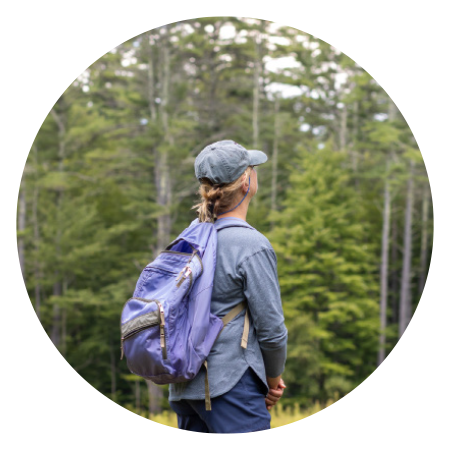
Individual parcels can have a real impact when it comes to providing habitat for wildlife and protecting natural resource values and functions. In this recorded presentation, we will help you identify what is important to you about your land and begin collecting information about what is currently there. Have you outlined your goals for your property? Are you familiar with your property’s boundaries and possible legal constraints? We will help you inventory what you have and get you to explore how your property fits into the broader landscape. We’ll help you map your property, identify actions you can take to help you meet your goals, and set reasonable expectations.
You can access the recorded presentation and associated resources by visiting the links below.
Watch the Presentation:
Resources & Activities:
- Questions to Consider When Setting Your Goals
- Drawing Your Property: An Exercise for Homeowners and Landowners
- Woodland Health Assessment: Checklist & Management Actions
- Woodland Actions and Interests: Identify and Rank Your Objectives
- Woodland Management Plan [Template]
- Woodlot Boundary Line Marking
- GRANITView
Forest Ecology 101
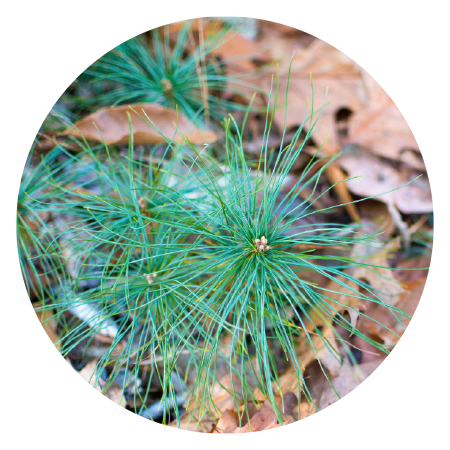
New Hampshire is home to more than 80 native tree species and a variety of forest types, from the boreal spruce-fir forests of the White Mountains to the Appalachian oak-pine forests found in the southern part of the state. In this recorded presentation, we’ll discuss how factors such as individual species adaptations, soils, topography, climate, natural disturbances, human land use history, and species interactions have shaped the forests we see today. With an understanding of the fundamentals of forest ecology and why trees grow where they do, you’ll be better equipped to evaluate and enhance the trees and forests in your backyard.
You can access the recorded presentation and associated resources by visiting the links below.
Watch the Presentation:
Resources:
- Why Trees Grow Where They Do In New Hampshire Forests - William B. Leak and Jane R. Riddle
- Good Forestry in the Granite State
- Dirt to Trees to Wildlife
- Web Soil Survey
- "Vermont and New Hampshire: There's Something in the Soil" (from Northern Woodlands)
- "What is Shade Tolerance, and Why is it so Important?" (From Northern Woodlands)
Landscaping to Attract and Support Wildlife
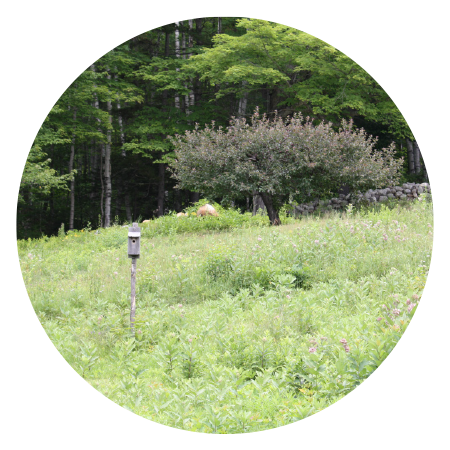
“An abundance of wildlife” is one of the best indicators of an ecologically well-designed landscape. By understanding how pollinators, birds, mammals, reptiles and amphibians select their habitats during each season of the year, we can design landscapes that effectively attract and support a diversity of wildlife. This recorded presentation will provide practical methods for how to design your landscaping to attract and benefit a diversity of wildlife species.
You can access the recorded presentation and associated resources by visiting the links below.
Watch the Presentation:
Resources:
- USDA Plant Hardiness Zone Map Plant Hardiness Zones
- USDA Plant Hardiness Zone Map (downloadable PDF maps at various resolutions)
- New 2023 USDA Hardiness Zones Explained (UNH Extension Blog)
- Integrated Landscaping: Following Nature's Lead, by Lauren Chase-Rowell, Katherine Hartnett, Mary Tebo Davis and Marilyn Wyzga (Book)
- Landscaping at the Water's Edge
- Dark Sky (light pollution impacts on wildlife)
- UNH Extension Education Center
- UNH Extension County Foresters
- Importance of snags (fact sheet)
- Invasive Species:
- Woodworking for Wildlife
- Native Plants
Identify Common Trees and Upland Invasive Plants
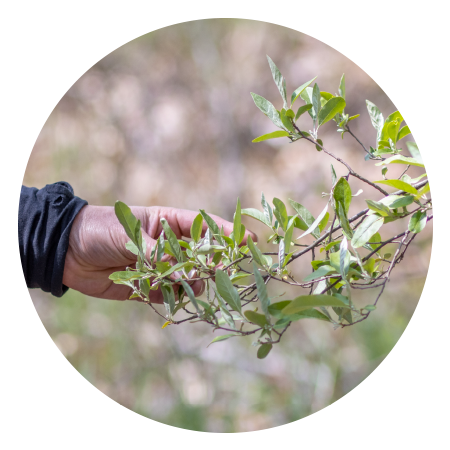
Identification of trees and shrubs is an important skill in managing your land or learning more about the natural world around you. During this recorded presentation you will learn some essential tools used in identifying different woody plants, and how to apply these skills to common trees and upland invasive plants that occur throughout New Hampshire. This session will cover tips and clues for identifying woody plants in all seasons, not just when leaves are out. In addition to foliage, we will discuss clues such as overall plant shape, branching patterns, buds, bark, smell, taste, cones, fruits, and habitat. This session will spend about two-thirds of the time on native tree identification and one-third of the time on upland invasive tree and shrub identification.
You can access the recorded presentation and associated resources by visiting the links below.
Watch the Presentation:
Resources:
- Forest Trees of Maine Identification Book [buy it or download the pdf from the website]
- UNH Extension Wildlife Specialist Matt Tarr’s Helpful Characteristics for Identifying Trees and Shrubs Guide
- UNH Extension Forester Mike Gagnon’s guide to New Hampshire's Upland Invasive Species
- UNH Extension Education Center: Ask questions and find support from Extension Staff, Master Gardeners, and Natural Resources Stewards
- UNH Extension County Foresters
- Invasive Species:
Buzz and Balance: Rewilding Your Backyard to Support Pollinators While Minimizing Tick Encounters
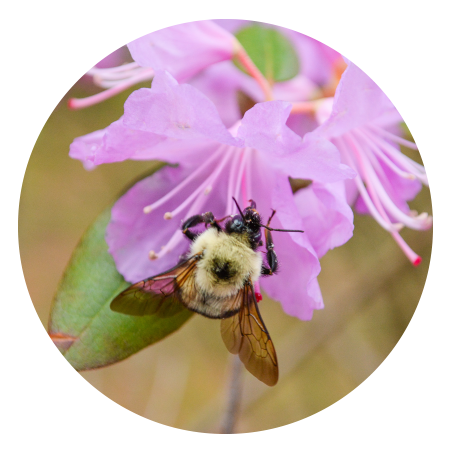
Explore what it means to live closer to nature by rewilding your backyard to support pollinators like bees while managing the risk posed by tick encounters. In this recorded presentation, learn how to design a yard that nurtures wildlife, promotes biodiversity, and provides a safe environment for your family. We’ll cover practical strategies for creating pollinator-friendly spaces with native plants and tips for managing tick populations. Whether your goal is to attract more bees, create a more sustainable landscape, or balance benefits for pollinators with tick safety, this session will provide you with the knowledge and tools to make informed decisions as you transform your landscape into a haven for wildlife and your loved ones.
You can access the recorded presentation and associated resources by visiting the links below.
Watch the Presentation:
Resources:
Biodiversity:
- American Museum of Natural History: What Is Biodiversity?
- NHPR: New Hampshire has a biodiversity crisis. There aren’t easy solutions.
- NH Audubon: Spring Garden Cleanup: Supporting Pollinators and Biodiversity
- UNH Extension: Biodiversity Principles and Applications: Conference for Natural Resource Professionals in New Hampshire Summary
Rewilding:
- UNH Extension: Create Wildlife Habitat In Your Backyard
- University of Florida Extension: Rewild Your Yard
Bees:
- UNH Extension: Pollinator Garden Certification
- University of Massachusetts: Pollinator Steward Certification Course
- UMaine: Pollinator Friendly Gardening Course
- Michigan State University: Pollination: Why are Bees Important?
- USDA: The Importance of Pollinators
- U.S. Forest Service: Gardening For Pollinators
- PSU Extension: Tick Prevention for Beekeepers
- University of Minnesota: Create Nesting Habitat
- UNH Extension: Leaving Leaves and Flower Stalks for Wildlife
- Xerces: Bumble Bees: Nesting and Overwintering
- UNH Extension: Planting for Pollinators: Establishing a Wildflower Meadow from Seed
- UC Davis Arboretum and Public Garden: Leave the Leaves to Help Pollinators (from CA)
- Xerces: Bring Back the Pollinators: Follow these Four Simple Steps
- U.S. Forest Service: Bee Pollination
- University of Minnesota: Create Nesting Habitat
- Xerces: Making Bee Hotels
- U.S. Forest Service: Pollinators in Forests
Ticks:
- UNH Extension: Biology and Management of Ticks in New Hampshire
- CDC: Ticks
- EPA: Repellents: Protection Against Mosquitos, Ticks, and Other Arthropods
- Tick Free NH
- URI: Tick Encounter
- NH DHHS: Tickborne Diseases
- Cornell CALS: Tick Biology
Pesticide Safety:
- UNH Extension: Selecting the Appropriate Pesticide Product For Use in the Home, Yard, and Garden
- PSU: Pesticides and Pollinators
UNH Extension Diagnostic Services:
- Tick Testing Lab
- Insect and Arthropod Identification Service
- Soil Testing Service
- Plant Diagnostic Lab
Keep Your Trees and Forests Healthy
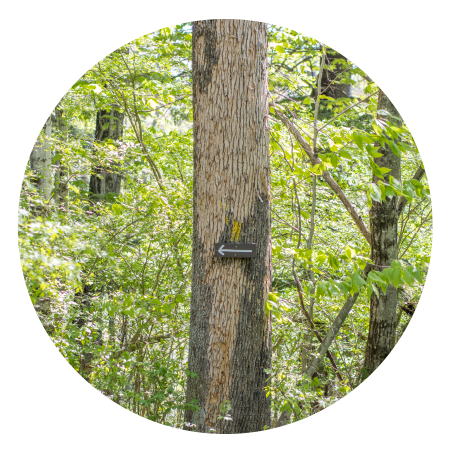
In this recorded presentation, we’ll cover some of the more common insect and disease issues in New Hampshire’s trees and forests, including diagnosis and control options. We will also discuss invasive plants, the challenges they present, and management techniques. Trees near homes, power lines, and other frequently used spaces can raise concerns about tree health and risk. We’ll discuss how to promote the development of structurally stable trees through proper tree care practices as well as some of the considerations involved with assessing the health and stability of trees in more developed landscapes.
You can access the recorded presentation and associated resources by visiting the links below .
Watch the Presentation:
Resources:
- UNH Extension Education Center: Ask questions and find support from Extension Staff, Master Gardeners, and Natural Resources Stewards
- UNH Extension County Foresters
Insects and Diseases:
Invasive Species:
- Extension's Invasive Species page
- Hillsborough County Forester Mike Gagnon's Invasive Species Guide
- New Hampshire Guide to Upland Invasive Species
- NH Department of Agriculture, Markets, and Food, Plant Industry Division Invasive Species page
Tree Care:
Hiring an Arborist
There are numerous companies offering landscaping, tree care, tree removal, “hazard tree removal," and related services in New Hampshire. For the best tree care (for both trees and people), I always recommend working with a certified arborist AND doing due diligence to hire the right arborist for the job. It’s worth taking the time to talk to several companies and get several estimates before deciding who to work with. Arborists are not required to be licensed or certified in New Hampshire and it can be surprising to learn how many tree services don’t have a certified arborist on staff.
- The New Hampshire Arborists Association and the International Society of Arboriculture both have voluntary certification programs, and some nearby states (Maine, Massachusetts) either require licensure or have their own state certification programs. It’s important to recognize that both ISA and NHAA certification are based on written tests and not practical skill application. Certification indicates a baseline level of knowledge of a broad range of tree care topics and a commitment to safety and best practices.
- The New Hampshire Arborists Association (NHAA) has some good information about what to look for in an arborist and a list of New Hampshire certified arborists. The NHAA list unfortunately is only organized alphabetically, so I also recommend Googling “arborist [your town] NH” and doing a bit of cross-referencing with other sources below and reading reviews.
- The International Society of Arboriculture (ISA)’s Trees are Good site also has a “Find an Arborist” tool which has the advantage of being searchable by town/zip code and lists additional skills such as the Tree Risk Assessment Qualification.
- The American Society of Consulting Arborists (ASCA) also maintains a directory of consulting arborists, who may provide a different set of services than other tree care companies, including things like tree risk assessment, structural support system installation, plant healthcare, etc. ASCA has a good breakdown of types of arborists on their website with a link to their consulting arborist directory at the top of that page.
- The New Hampshire Landscape Association (NHLA) also has a directory of professionals. with the option to sort for those who are arborists (presumably this means ISA or NHAA certified, though this is not specified) and licensed pesticide applicators. I would recommend verifying that an arborist is certified using the NHAA or ISA directory, and ensuring that anyone applying pesticides is licensed by the NH Division of Pesticide Control, (603) 271-3550.
Before Hiring an Arborist
- Ask about professional membership and certification through NHAA, ISA, or ASCA, or company accreditation through TCIA
- Ask for (and verify!) proof of insurance; a reputable arborist should have insurance to cover personal and property damage and worker’s compensation
- Ensure the arborist you’re considering is familiar with the ANSI A300 Tree Care Standards (2023), the ANSI Z133 Safety Standard, and the relevant best management practices
- Ask for (and check!) references
- Don’t be afraid to get several estimates. As is often the case, the lowest bid may not be the best option
- Have a contract that outlines the scope of work, specifications and standards, clean-up expectations, and costs
Tree Risk Assessment & “Hazard Trees"
Tree risk assessment is a specific service that an arborist may offer either as a stand-alone service or in addition to other tree care services. ISA’s Tree Risk Assessment Qualification (TRAQ) training and methodology is most common in the US. There are a few levels of risk assessment, which are explained well here: https://www.bartlett.com/tree-risk-assessments.cfm (this is not an endorsement of Bartlett as a company, but they are among the tree services using TRAQ). TRAQ uses a systematic approach to assess the likelihood of failure for a whole tree or a given part of a tree and the likelihood of the tree/part of the tree impacting a given target. The combination of the likelihood of failure and likelihood of impact (combined “likelihood” rating) is then combined with the consequences of failure and impact to come up with an overall risk rating.
A complete tree risk assessment should always include a specified timeframe and will also include options for mitigating risk and an assessment of residual risk assuming mitigation measures are taken. ISA’s Tree Risk Assessment form, designed to be used for Level 2 Basic Risk Assessment, is available publicly for anyone who wants to check it out for informational purposes, but it should only be used by qualified arborists with TRAQ training.
Plant Health Care
Plant health care (PHC) refers to a holistic approach to preventing, monitoring, and treating health problems in trees and shrubs within their surrounding landscape. PHC incorporates the principles of Integrated Pest Management (IPM) and may include the use of pesticides, herbicides, and fungicides to assist in controlling insects and disease. Not all arborists provide PHC services.
Anyone using pesticides or herbicides on a property they do not own needs to be licensed by the New Hampshire Division of Pesticide Control. You can contact the Division of Pesticide Control at (603) 271-3550 for a list of licensed applicators in your area.
Fire in New England's Forests: Historical Context, Ecological Benefits, and Protecting Your Property

Fire has long played a role in shaping New England’s forest, changing species composition and structure, and in turn influencing wildlife habitat. Paradoxically, fire suppression over the past 100+ years, combined with shifts in climate, weather patterns, and past forest management practices, has resulted in increased fuel loads and subsequent risk of wildfires.
In the first half of this recorded session, we delve into historical fire regimes and ecology to learn how fire—and its absence—has shaped our current forested landscape. In the second half, we discuss why wildfire risk is increasing and offer actionable steps you can take to assess and reduce the risk of wildfire around your property and neighborhood while preserving forest and wildlife habitat benefits.
You can access the recorded presentation and associated resources by visiting the links below.
Watch the Presentation:
Resources:
- Official Smokey Bear website
- New Hampshire Division of Forests and Lands Wildfire Prevention
- NH Division of Forests and Lands Daily Fire Danger - Also available via email, on Twitter/X, Instagram or by phone, 1-866-NH-FIRES
- Fire Weather Watches, Red Flag Warnings, Fire Weather Forecast from National Weather Service in Grey, ME
- USDA Forest Service Eastern Region, Fire
- InciWeb – real-time map of current wildfires and natural disasters
- Northeast-Midwest State Foresters Alliance Wildfire Risk Information
- US Fire Administration/FEMA
- Fire Adapted Communities Learning Network
- National Interagency Fire Center and National Interagency Coordination Center
- Northeastern Forest Fire Protection Compact (NFFPC)
- National Integrated Drought Information System – New Hampshire
- US Drought Monitor
- National Fire Protection Association/Firewise USA
- Maine fire-resistant plants list
- Tips for Homeowners
- Oregon State University Extension – Fire Science Core Curriculum
- Wildfire risk is rising in New Hampshire — and science has identified the culprit (New Hampshire Bulletin, April 25, 2025)
- The Warming Climate is Sparking Wildfires on the East Coast (NPR, July 10, 2021)
- United States of Wildfire (NPR)
- UNH Extension Education Center: Ask questions and find support from Extension Staff, Master Gardeners, and Natural Resources Stewards
- UNH Extension County Foresters
